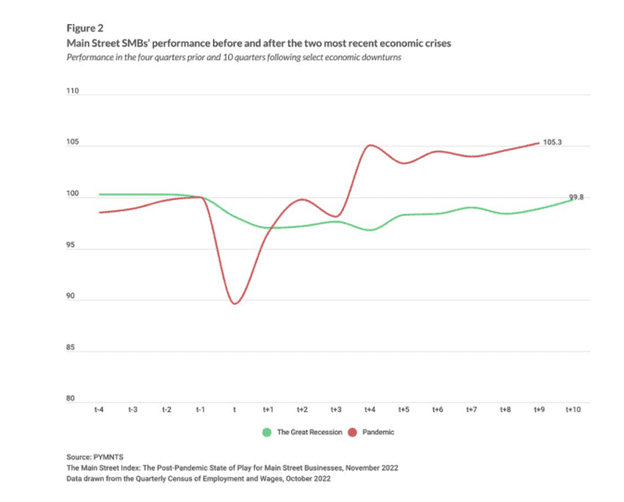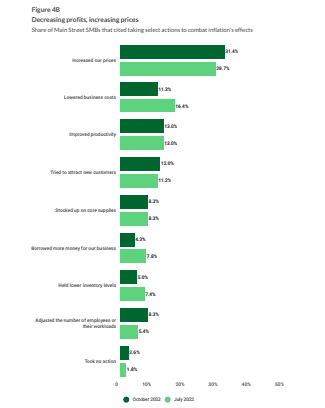
Main Street SMBs can take a breather, having shown resilience during a year threatened by recession.
The holiday season is winding down; the major gift-giving days are largely in the rearview mirror. With stores closed and families gathering for the long weekend, small business owners can finally relax, put their feet up, and look forward to better days.
Well, that’s not likely.
As the continuing spate of PYMNTS reports has shown, the smaller firms that power the U.S. economy managed to put the pandemic squarely in the “challenges met” category.
Consider these stats: At mid-pandemic lows, wages and employment had fallen by 43% and 48% annualized, respectively, for the businesses we’ve tracked. But by the middle of 2022, we found that even the firms most impacted by restrictions and shuttering had rebounded.
By May, though, the three types of Main Street small and medium-sized businesses (SMBs) that were among those most affected by the pandemic also showed the swiftest recovery over the past year from their pandemic low points.
The most visual, shorthand way to view the snapback has been to track the Index crafted through the joint efforts of PYMNTS and Melio, which in turn showed that restaurants were up 29%, fitness establishments were 25% and personal services providers were up 17% from their lows, according to “The Main Street Index.” By the end of the third quarter, SMBs were 4.6% “healthier” than they were before the pandemic.

That said, recoveries can get overheated, so much so that input costs become inflated and to keep margins intact, companies have to cut some operating costs or raise prices charged to end consumers.
We saw a bit of both with Main Street SMBs, but not enough to stave off operating pressures. They continue to deal with rising costs by marking up prices, while fewer are cutting costs. By the fall of 2022, 58% of all SMBs said their profit margins decreased through 2022. Among smaller firms, 68% reported decreased profit margins.

As of October 2022, 6.4% of firms considered themselves at risk of bankruptcy, a slight increase from 6.3% in November 2021. The vast majority of companies have weathered the storm – a testimony to that aforementioned resilience. Drill down a bit, and it is the companies with a mixed, broad reach that have fared, and will fare, best. Companies with a mixed online and physical presence (62%) are more optimistic about weathering the economic downturn, given their “blended” revenue streams.
Technology has played a role in keeping these companies buoyant. Among the areas that have attracted the most investment – and intent to invest: Payroll software, cash flow management and customer relationship management (CRM).
All of these investments come when 64% of Main Street firms expect the U.S. economy to enter a recession. As many as 41% think a recession is already happening, while one in five businesses believe a recession will come in the next six months.
Christmas weekend offers a bit of respite, but for SMB owners, there will be no real rest for the weary.